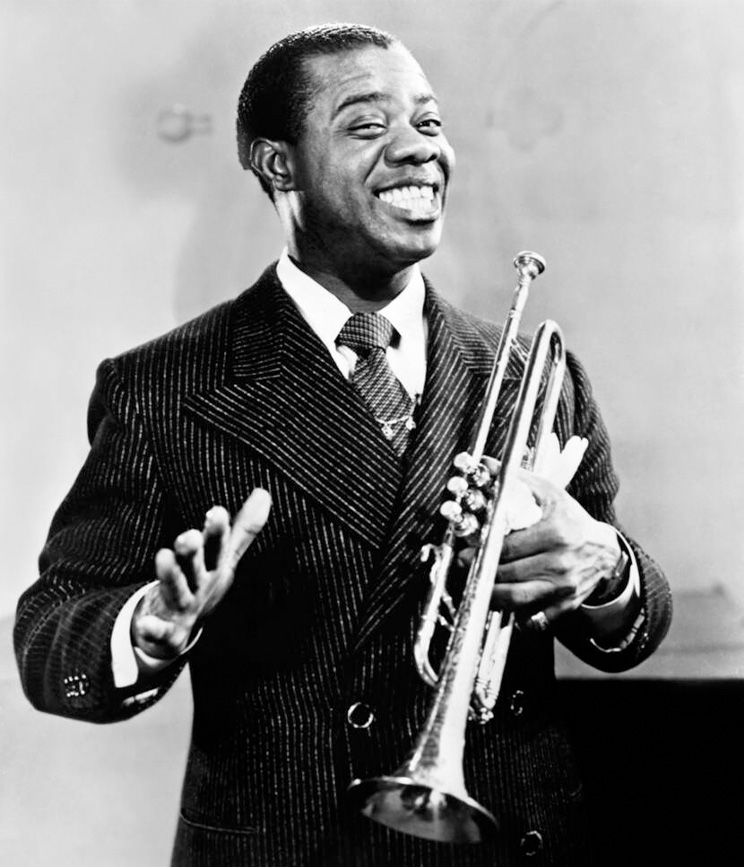You need to do some more shopping! Your shopping cart is currently empty.
This post covers the crucial Chicago phase of Louis Armstrong's career, highlighting how his innovations during this period paved the way for his future success. The next blog posts will explore his international fame, acting career, and the enduring impact he had on music and culture.
From New Orleans to the Windy City
In the early 1920s, Louis Armstrong embarked on a journey that would take him from the familiar streets of New Orleans to the bustling city of Chicago. This move marked a pivotal point in his career, one that would see him transform from a talented musician into a jazz legend.
Joining King Oliver’s Creole Jazz Band
Armstrong’s big break came when his mentor, Joe "King" Oliver, invited him to join his Creole Jazz Band in Chicago in 1922. This was a significant moment for Armstrong, as Oliver’s band was one of the most respected groups in the jazz world. Playing second cornet alongside Oliver, Armstrong quickly made his mark with his impressive technique and unique sound.
The Hot Five and Hot Seven Recordings
Perhaps the most crucial period in Armstrong’s rise was his Hot Five and Hot Seven recording sessions. These sessions, which began in 1925, marked Armstrong’s transition from a talented ensemble player to a leading solo artist. The recordings showcased his innovative approach to jazz, particularly his use of extended solos and his ability to convey emotion through his instrument. Songs like "West End Blues" and "Potato Head Blues" are hailed as some of the most influential recordings in jazz history.
Marriage to Lil Hardin
Behind every great musician, there is often an unsung hero. For Louis Armstrong, it was Lil Hardin, a pianist in Oliver’s band. They married in 1924, and Hardin played a crucial role in Armstrong's career. She encouraged him to leave Oliver’s band and pursue a career as a frontman. Her influence was instrumental in Armstrong's decision to record under his own name, leading to the creation of the Hot Five and Hot Seven.
Chicago: The Launchpad of Armstrong’s Career
Chicago during the 1920s was a hotbed of jazz innovation, and Armstrong was at its center. His time in Chicago was not just about music; it was about breaking barriers and setting new standards in jazz. Armstrong’s improvisational style and charisma became a template for jazz musicians to come. He wasn't just playing notes; he was telling stories through his trumpet, a skill that would become his trademark.
Armstrong's Influence on the Chicago Jazz Scene
In Chicago, Armstrong's influence extended beyond his own recordings. He became a mentor and inspiration to countless other musicians. His approach to rhythm, melody, and improvisation reshaped the jazz landscape. The city's vibrant music scene provided the perfect backdrop for Armstrong's creative exploration, allowing him to collaborate with various artists and continuously evolve his sound.
The Legacy of Chicago in Armstrong's Music
The Chicago years were transformative for Louis Armstrong. Here, he solidified his reputation as a jazz virtuoso and an innovative composer. The city served as a catalyst for his artistic growth, a place where he could experiment and refine his musical identity. The legacy of this period is evident in the countless jazz standards he recorded, which continue to influence musicians across genres.
Conclusion: A Star Ascends
By the end of the 1920s, Louis Armstrong had established himself as a leading figure in jazz. His time in Chicago was a period of intense musical development and personal growth. From his collaborations with King Oliver to his groundbreaking Hot Five and Hot Seven sessions, Armstrong left an indelible mark on the Chicago jazz scene and the world of music at large. These years were not just about Armstrong finding his voice; they were about him giving voice to a whole new era of jazz.


